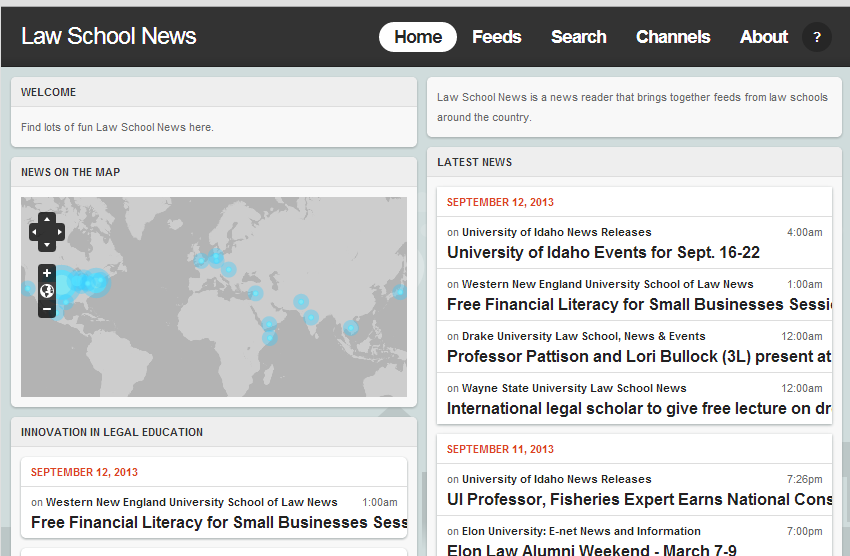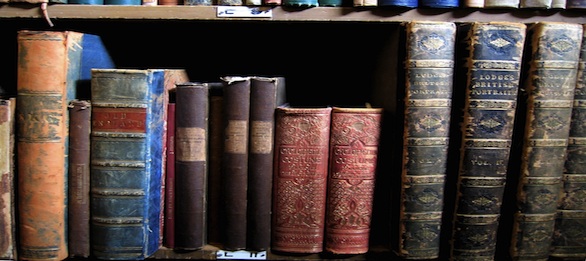We were able to live stream the entire CALI conference on YouTube this year. A lot of folks have asked me about how we did this and that’s what this article is going to cover. Before I get into the nitty gritty of how it all worked I want to make sure to thank the folks at IIT Chicago-Kent for making all of the tech stuff happen. Specifically from the Audio Visual & College Service Center Staff: Jarryd Scott Steimer, David Townsend, Alton Jackson, Sue Jadin, Gloria Juarez, Aaron Ruffin; from the Center for Law and Computers Staff: Sejal Vaishnav, Nisha Varughese, Bill Mette, Mohit Gaonkar, Rudi Buford, Efe Budak, Heather Banks, Greg Morris, Larry Adamiec; and Debbie Ginsberg and Emily Barney from the Law Library. Thanks everyone for making CALIcon13 a great tech success.
One upon a time webcasting a conference live on the Internet took a LOT of effort. Cameras, capture cards, encoders, PCs, a streaming server, and a fair amount of good luck to make sure it all worked. We did it for many years with the CALI Conference for Law School Computing. Eventually we gave up, as it became too difficult to manage especially as we took the conference on the road every year to a different law school. Even something as seemingly basic as pointing a camera at the front of room became difficult especially when you multiplied it across 5 rooms and 4 – 5 sessions per day. Lots of equipment and lots of things to go wrong. We just went back to recording for archives and dropped the live stream.
Earlier this year Google began making YouTube Live Events available to Google Apps for Education organizations. YouTube Live allows you to schedule and stream live video using YouTube’s infrastructure. Using YouTube Live requires having an encoder running on a local computer and a good, stable Internet connection to connect the encoder to YouTube. Once connected to YouTube, the event will not only stream live on YouTube but it will also record to YouTube. The archived recording of the event becomes available on YouTube at the same URL shortly after the live streaming of the event concludes. After testing the product I realized that we might be able to bring live streaming back to CALIcon.
The basic set up for this is pretty straight forward and is well handled by commodity hardware. We used a Canon video camera, Star-Tech USB capture, and Dell laptops. The actual specifics of the hardware isn’t really important since it is more about the features of the hardware. The camera should have composite video and audio outputs. High definition video isn’t really necessary here, it just uses extra bandwidth. The camera’s video and audio outputs were connected to the USB capture device. The capture device was connected via USB to the laptop. The laptop needn’t be a hot rod, just current. The encoding software we used is available for Mac or Windows computers.
With the hardware in place the USB capture device is seen as a USB camera by the encoding software. This allows the audio and video from the camera to be streamed to YouTube. For encoding of the video, we used the free version of TeleStream Wirecast for YouTube. Wirecast proved easy to use and the free version provides enough features to get your stream up and running, especially for most law school events that you might be streaming.
Once we sorted out the hardware and software we were going to use the next thing was making sure that all of the sessions were scheduled on YouTube. 55 sessions were scheduled on YouTube. This gave us event slots that we could connect the encoders to at the right time. We created a separate event for each CALIcon session. This created a YouTube link for each session. The URL was embedded in each session page on the CALIcon website so that the conference sessions could be watched live directly from the CALIcon website. The same URLs embed the archived session video in the session page on the site.
And that is all there is to it. We also recorded the video on SD cards in the cameras for archival purposes. Of the 55 session streams that we launched, we had some timing issues with the first set of sessions that resulted in some short streams, and we had 1 stream that did not record properly on YouTube. All of these videos were replaced on YouTube with the video recorded on the SD cards. Within 4 days of the end of CALIcon13 all of the video for all of the sessions that were recorded was available to all on YouTube and on the CALIcon13 website.
I would recommend that you give this a try at your law school. No matter what sort of recording/streaming solution you are using, I think you’ll find the YouTube Live Events solution useful. If you have any thoughts or questions, please use the comments below or send me an email.


